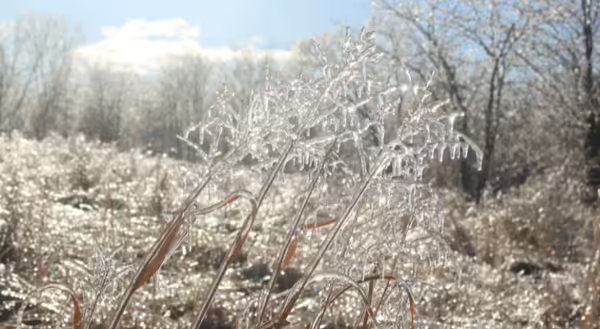
You may have heard the phrase “leave the leaves” when it comes to deciding what to do with your trees' fallen leaves in autumn. But what about the herbaceous plants and grasses in your home landscape? Should you leave them standing over the winter or cut them down? Let’s take a closer look at the role that native grasses play in your garden.
Role of native grasses in the home landscape
What native grasses might be in your home gardens? Popular choices include Switchgrass, Prairie Dropseed, Little Bluestem, and Big Bluestem. In their natural habitat, these prairie grasses would remain standing throughout the fall and winter. In your garden, they can serve as a food source and safe haven while being aesthetically pleasing too.
A source of food
The spikelets of many grasses produce seeds that can serve as a food source for a variety of birds, such as sparrows, through the fall and winter season.
A safe haven
Bunchgrasses provide habitat for insects, birds, and small mammals. If you removed all the foliage of these grasses in the fall, those creatures would have to leave your yard to find shelter. A resource on nesting habitat for insects put out by the Xerces Society mentions that the natural form of bunchgrasses provides an opportunity for ground nesting bees to use your garden. A bunchgrass's crown is relatively small compared to the spread of its leaves, so if you plant several next to one another with their leaves touching, there will be bare ground out of sight between the bunches. Ground-nesting bees can then use this soil, without you needing to leave bare spots of soil visible in your garden.
To attract cavity-nesting bees, which can build nests in plant stems, leave your grasses standing through the fall and winter. Heather Holm recommends leaving native plants intact through the fall and winter, and then cutting your plant stems down to 8 to 24 inches to provide nesting habitat in the spring. While grasses are not usually the first pick as a nesting site compared to some other native plants, some of them do have hollow stems and theoretically could be used. Try it out in your garden and see if the bees come!
An aesthetically pleasing garden addition
Many grasses keep their bunched form in the winter months and provide an aesthetic component to the home landscape, in contrast to other plants that completely die back to the ground or lose their leaves. These grasses rustle in the wind and look beautiful covered in snow or ice.
How to manage
Leaving your grasses standing through the fall and winter does not mean leaving them standing year-round – since many of the grasses we plant in our home gardens are bunchgrasses, removing the previous year’s growth can help keep the grass healthy. Wait until spring, right when you start to see the first few green shoots emerging from the center of your grasses. Then, take pruners or loppers, depending on the size of your grass, and cut the previous year’s foliage down to the base of the plant. If you want to leave stems standing for bee nesting sites, you can cut the stems down to 8 to 24 inches but cut the rest of the leafy foliage down to less than 6 inches.
Why should you do this? Think about a prairie landscape, with grazing animals and the occasional fire. This sort of disturbance is necessary for the health of the landscape, and the grasses in our home gardens benefit from a bit of disturbance as well.
Learn more:
Nesting and Overwintering Habitat resource from the Xerces Society
Heather Holm's website
Photo Credit: "Native grass species covered in ice" by U.S. Fish and Wildlife Service - Midwest Region is marked with Public Domain Mark 1.0.
Never miss a new post! Sign up for our email list.
ABOUT THE AUTHOR: Erin Garrett is a Natural Resources, Environment, and Energy Educator for University of Illinois Extension serving Alexander, Johnson, Massac, Pulaski, and Union counties. Erin develops and delivers high impact programming to adults and youth to help them develop an appreciation for natural resources and to empower them to make small changes to positively impact the environment. Erin’s programming focuses on why homeowners should consider choosing native plants, how to support native pollinators, how to identify grasses, how to identify and manage invasive species, and developing an appreciation for prairie ecosystems.
ABOUT THE BLOG: Grasses at a Glance dives into grass identification, focusing on tips and tricks that make grass identification possible. Get information about native and non-native species, how to tell look-alikes apart, and which grasses you can find in Illinois.